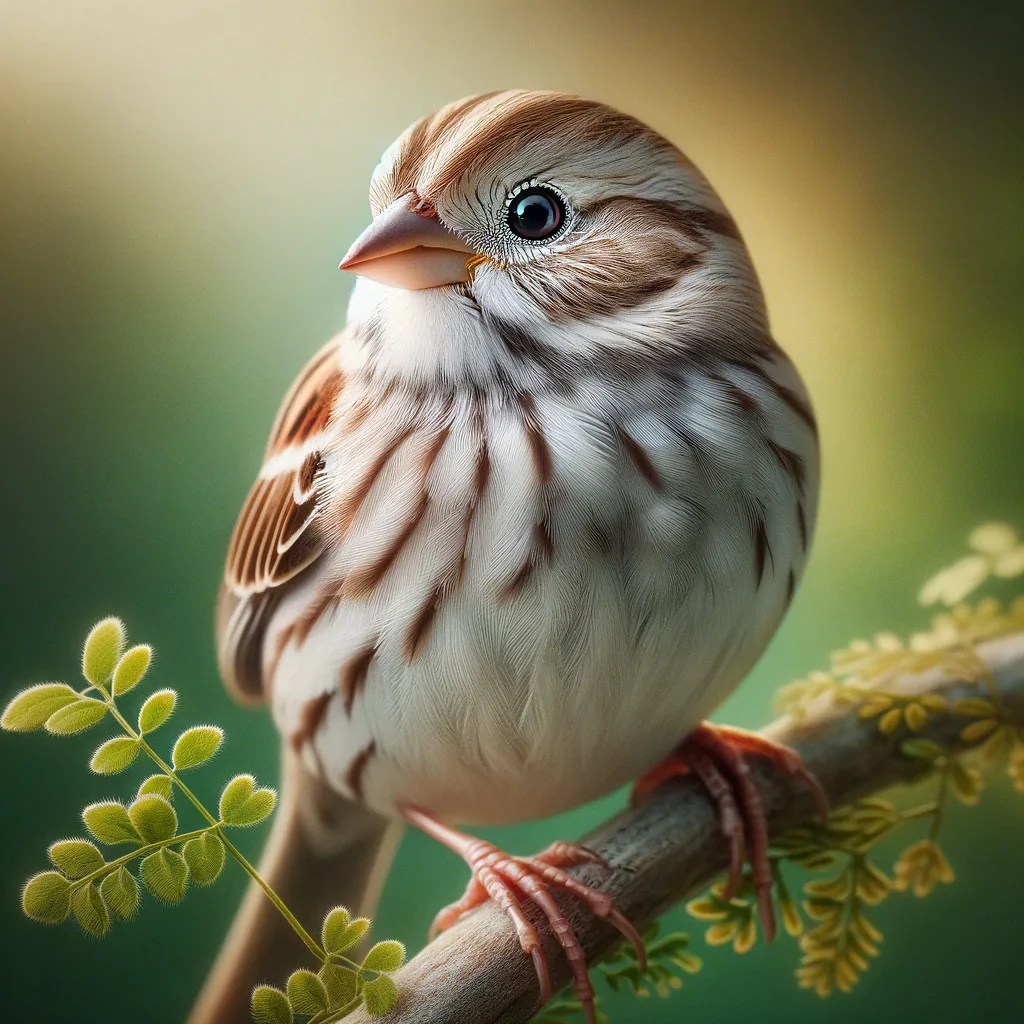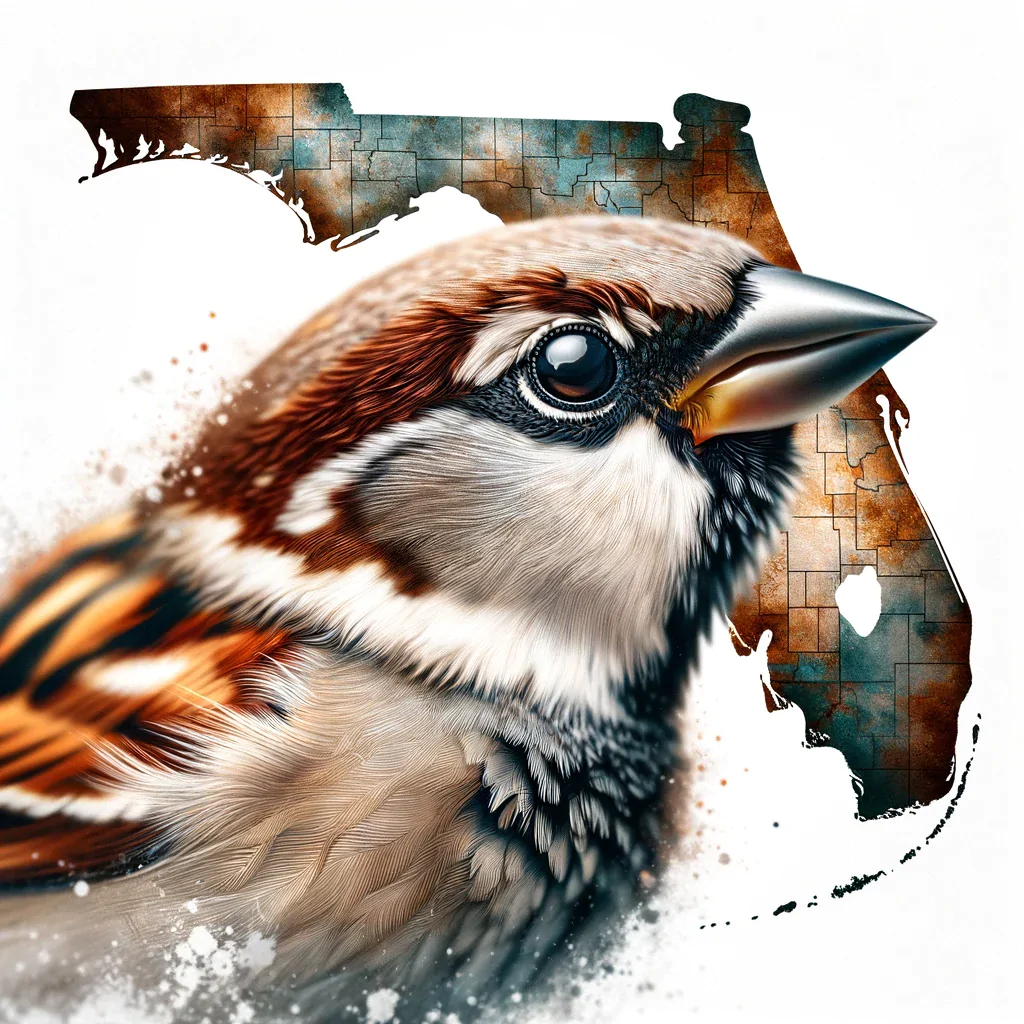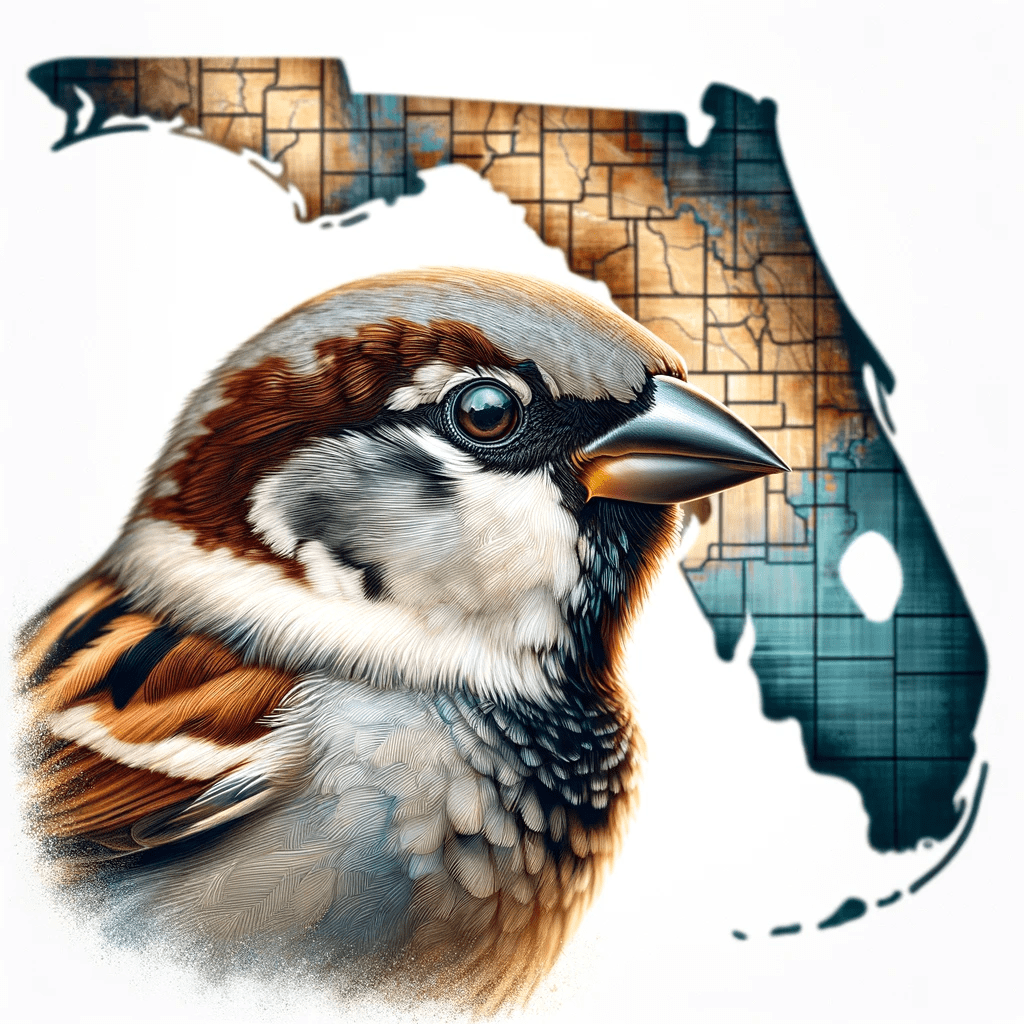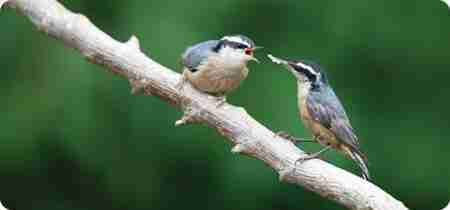Birdwatching can be a fascinating and rewarding pastime. As an expert ornithologist, your interest has led you to seek out the diverse range of sparrows that call Florida home. Combining a personal interest with professional focus, you’re prepared to share your knowledge about the different types of sparrows in Florida.
As you sift through this article, you’ll metamorphose from a novice observer to an informed sparrow identifier, equipped with valuable know-how about the distinguishing features and habitats of various sparrow species in Florida. Get ready to enrich your birdwatching experience in a way that only detailed insights and firsthand knowledge can.[/et_pb_text][pac_divi_table_of_contents default_state=”closed” included_headings=”off|on|on|off|off|off” level_markers_1=”decimal” level_markers_2=”decimal” level_markers_3=”whole” _builder_version=”4.23.1″ _module_preset=”default” global_colors_info=”{}” theme_builder_area=”post_content”][/pac_divi_table_of_contents][et_pb_text _builder_version=”4.23.1″ background_size=”initial” background_position=”top_left” background_repeat=”repeat” hover_enabled=”0″ global_colors_info=”{}” sticky_enabled=”0″]

Table of Contents
Recognizing Sparrows In Florida: An Overview
Hello, friends! There’s something truly charming about Sparrows in Florida that has always fascinated bird watchers and nature lovers alike. Are you looking to learn more about these small yet dynamic birds too? Well, you’re in the right place. In this comprehensive guide, we’ll get to know diverse species of sparrows, their specific characteristics, and their unique roles in Florida’s vibrant ecosystem.
Variability in Different Species of Sparrows
Sparrows in Florida are pretty variable, with well over a dozen species found all year round. While most are native to the Sunshine State, some are migratory. As we go along, you’ll quickly learn that each species has its distinct traits that set it apart from the rest.
Introduction to Sparrow Identification
Before we deep dive into each sparrow species, it’s worth noting that sparrows are generally small birds with stout bodies, rounded wings, and short, squarish tails. They have specialized sharp, conical beaks designed for seed-eating. They’re primarily ground-dwelling birds, but you’ll often spot them flitting about in trees and shrubs.
Role of Sparrows in Florida’s Ecosystem
Now, Sparrows aren’t just cute little birds; they play a crucial role in the ecosystem too. They help control insect and weed populations and are an essential link in the food chain, serving as a food source for many predatory birds. Sparrows also influence seed distribution, thus aiding in plant dispersal and growth.
Distinct Characteristics of Sparrows
Alright, let’s now delve into the distinct characteristics specific to sparrows in Florida. Understanding these unique traits will allow you to accurately identify different sparrow species in the field.
Size and Shape of Sparrows in Florida
There’s quite a range when it comes to the size and shape of Sparrows. While most Florida Sparrows are small- to medium-sized, some such as the Henslow’s Sparrow are noticeably smaller or larger relative to other species.
Color Patterns of Sparrows
In coloration, sparrows in Florida are typically brown, gray, or white with variable streaking, barring, or spotting. Some have distinctive head stripes, while others feature unique bibs or rufous caps. Understanding the difference in color patterns is key to telling one sparrow species from another.
Distinctive songs and Calls of Sparrows
One defining characteristic of sparrows is their unique vocalizations. Their songs and calls are not just random chirps, they indicate species, sex, and sometimes has a particular message.
Common Sparrows in Florida
You’ve probably already encountered several common Sparrows without even knowing it. Sparrows like the House Sparrow, Song Sparrow, and Chipping Sparrow are pretty ubiquitous in Florida.
House Sparrow
The house sparrow is one of the most widespread sparrows in Florida. They are small and stout and have a mix of grays, browns, and blacks in their plumage.
Song Sparrow
The song sparrow has a streaked brown plumage contrasting with a white chest and sports a distinctive dark spot in the middle of its breast—a feature that’s a key identifier for them.
Chipping Sparrow
The Chipping Sparrow is identified by the notable rust-colored cap on its head, a white to grey underside, and a non-streaked brown back and wings.
Rare and Uncommon Sparrows in Florida
Florida is home to some surprisingly rare and uncommon sparrows as well! Namely the Henslow’s sparrow, grasshopper sparrow, and Le Conte’s sparrow.
Henslow’s Sparrow
Henslow’s Sparrow is one of the most secretive and rarely seen sparrows in Florida. It has an olive-hued face, a streaked back, and subtle chest markings.
Grasshopper Sparrow
Grasshopper Sparrows are so-called due to their insect-like call. They have a flat head, a short tail, and warm, buffy tones to their plumage.
Le Conte’s Sparrow
The Le Conte’s Sparrow is a small but brightly colored sparrow with a distinct peachy face, a gray nape, and a streaked back.

Migratory Sparrows in Florida
Part of what makes Florida a bird watcher’s paradise is its status as a host to several migratory birds, including sparrows such as the Savannah Sparrow, Lincoln’s Sparrow, and Swamp Sparrow.
Savannah Sparrow
The Savannah Sparrow is distinguishable by its yellowish eyebrow stripe and the streaked pattern on its flanks.
Lincoln’s Sparrow
Lincoln’s Sparrow, recognizable due to its buff-colored chest and delicate, fine streaking, passes through Florida during fall migration.
Swamp Sparrow
The Swamp Sparrow, as the name implies, prefers wet, swampy areas. It’s identified by its rusty wings and a grey chest.
Further Methods of Identifying Sparrows in Florida
Apart from their distinctive physical characteristics, observing behavioral traits, feeding, and flight patterns may assist you in correctly identifying these small birds.
Observing Behavioral Traits
Paying close attention to a sparrow’s behavior can offer excellent clues. Some sparrows are more shy or secretive, while others are more gregarious and visible.
Feeding Patterns of Sparrows
Sparrows’ feeding habits can also give you a hint. Some sparrows like the song sparrow feed heavily on seeds, while others, including the Savannah sparrow, tend to consume more insects.
Flight Patterns of Sparrows
Your observation isn’t complete without examining their flight patterns, which can differ considerably from species to species.
Preferred Habitats of Sparrows in Florida
Sparrows in Florida inhabit a wide range of habitats. Deciphering what ecosystems these species prefer can prepare you for a successful day of birdwatching.
Urban and Suburban Sparrows
House Sparrows have become well accustomed to urban living, and can frequently be seen in both suburban and city environments.
Wildlands and Farmlands Sparrows
On the other hand, species such as the Savannah Sparrow or Grasshopper Sparrow prefer wide open spaces like wildlands and farmlands.
Coastal and Wetland Sparrows
And then there are species like the Seaside Sparrow and Swamp Sparrow that have an affinity for coastal and wetland ecosystems respectively.




Spotting and Photographing Sparrows in Florida
Part of the thrill of birdwatching comes with capturing these amazing species on camera. But that requires being in the right place, at the right time.
Best Locations for Spotting Sparrows
Florida is a haven for Sparrows, offering a multitude of locations where they can be spotted. From the wetlands of the Everglades to the suburban parks of Orlando, the diversity is immense.
Effective Birdwatching Techniques
Patience is the name of the game when it comes to birdwatching. It helps to stay quiet, limit movement, and use binoculars for nonintrusive observation.
Photography Tips for Sparrows
When it comes to photographing Sparrows, be sure to consider variables such as lighting and composition. A fast shutter speed is ideal for capturing birds in motion.
Conservation Efforts for Sparrows in Florida
While we celebrate the diversity of Sparrows in Florida, it’s crucial we play our part in their conservation. Sparrows, like many other birds, face numerous threats that put their survival at risk.
Threats Faced by Sparrows
Loss of habitat, pollution, and climate change can pose significant threats to Sparrows.
Efforts to Preserve Sparrow Habitats
Multiple institutions across Florida are working tirelessly to conserve and restore Sparrow habitats. This includes conducting regular bird counts and carefully monitoring breeding activities.
How to Participate in Sparrow Conservation
Playing an active role in Sparrow conservation can be as simple as putting up feeders in your backyard, being mindful of your plastic usage, or participating in local bird counts.
Sparrows Vs. Similar Species in Florida
Finally, while identifying Sparrows, it can be helpful to learn how to differentiate them from similar species, such as Finches, Wrens, and Warblers.
Differentiating Sparrows from Finches
Finches often have more powerful beaks for seed eating and are usually more brightly colored compared to Sparrows.
Differentiating Sparrows from Wrens
Wrens are smaller and rounder than Sparrows, and they usually have a distinctive upturned tail.
Differentiating Sparrows from Warblers
Warblers are typically smaller and more slender than Sparrows and characteristically have more vibrant plumage.
And there you have it – a comprehensive guide to recognizing and appreciating the different types of Sparrows in Florida. Keep this handy guide nearby, and you’ll be an expert on Florida Sparrows before you know it! Happy bird watching!





Pingback: A Guide to Sparrow Identification